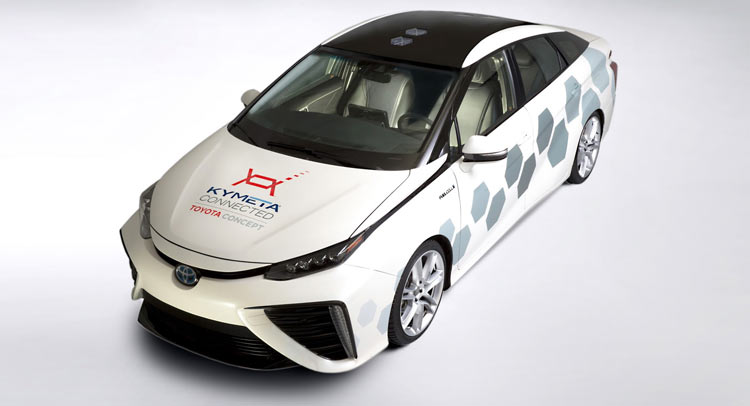-
Tips for becoming a good boxer - November 6, 2020
-
7 expert tips for making your hens night a memorable one - November 6, 2020
-
5 reasons to host your Christmas party on a cruise boat - November 6, 2020
-
What to do when you’re charged with a crime - November 6, 2020
-
Should you get one or multiple dogs? Here’s all you need to know - November 3, 2020
-
A Guide: How to Build Your Very Own Magic Mirror - February 14, 2019
-
Our Top Inspirational Baseball Stars - November 24, 2018
-
Five Tech Tools That Will Help You Turn Your Blog into a Business - November 24, 2018
-
How to Indulge on Vacation without Expanding Your Waist - November 9, 2018
-
5 Strategies for Businesses to Appeal to Today’s Increasingly Mobile-Crazed Customers - November 9, 2018
Toyota Brings Mirai-Based Research Vehicle To NAIAS
The Kymeta flat panel antenna shown in the picture keeps the Toyota Mirai online anywhere in the world. Satellite communication has a broader coverage area than cellular data and is more reliable in natural disasters. Partnering with American-based flat-panel antenna developer Kymeta, Toyota is trying to alleviate the bottlenecking of data that happens while using a standard mobile network, which is what connected cars now use.
Advertisement
Toyota’s goal here is to make future cars more communicate-y by installing a “Data Communication Module” into more vehicles.
“For several years, Toyota met with emerging companies around the world to investigate new technologies“, said Toyota Motor Corporation senior managing officer Shigeki Tomoyama in a prepared statement.
“We’re excited to be working with Toyota on this next generation of vehicle connectivity”, said Dr Nathan Kundtz, CEO of Kymeta.
And while models from the likes of Audi and Mercedes rolling out over the coming year connect to each other, servers and traffic infrastructure via a combination of 3G and 4G/LTE and dedicated Wi-Fi frequencies, Toyota is already looking to the skies and to satellites for the next innovation.
Toyota unveiled a research vehicle Tuesday that’s capable of receiving high-capacity satellite signals for higher data transfer.
While these satellites have historically required the use of a “dish” antenna on the ground, Kymeta’s satellite antennas remove the need for mechanical components by using software and liquid crystal technologies to electronically track and steer towards satellites. The companies say their team recently completed an 8,000-mile demonstration across the United States using the Kymeta satellite-enabled test auto. It can also be added to existing cars without sacrificing design.
The technology will not only aid in the distribution of massive data seamlessly, but also fuel the growth of connected vehicles worldwide which have a secure and stable communication at their disposal.
Advertisement
Mirai Creation Investment Limited Partnership, a fund where Toyota participates as an investor, invested $5 million in Kymeta earlier this month to speed up research and development on the car-mounted version of the antenna.




























